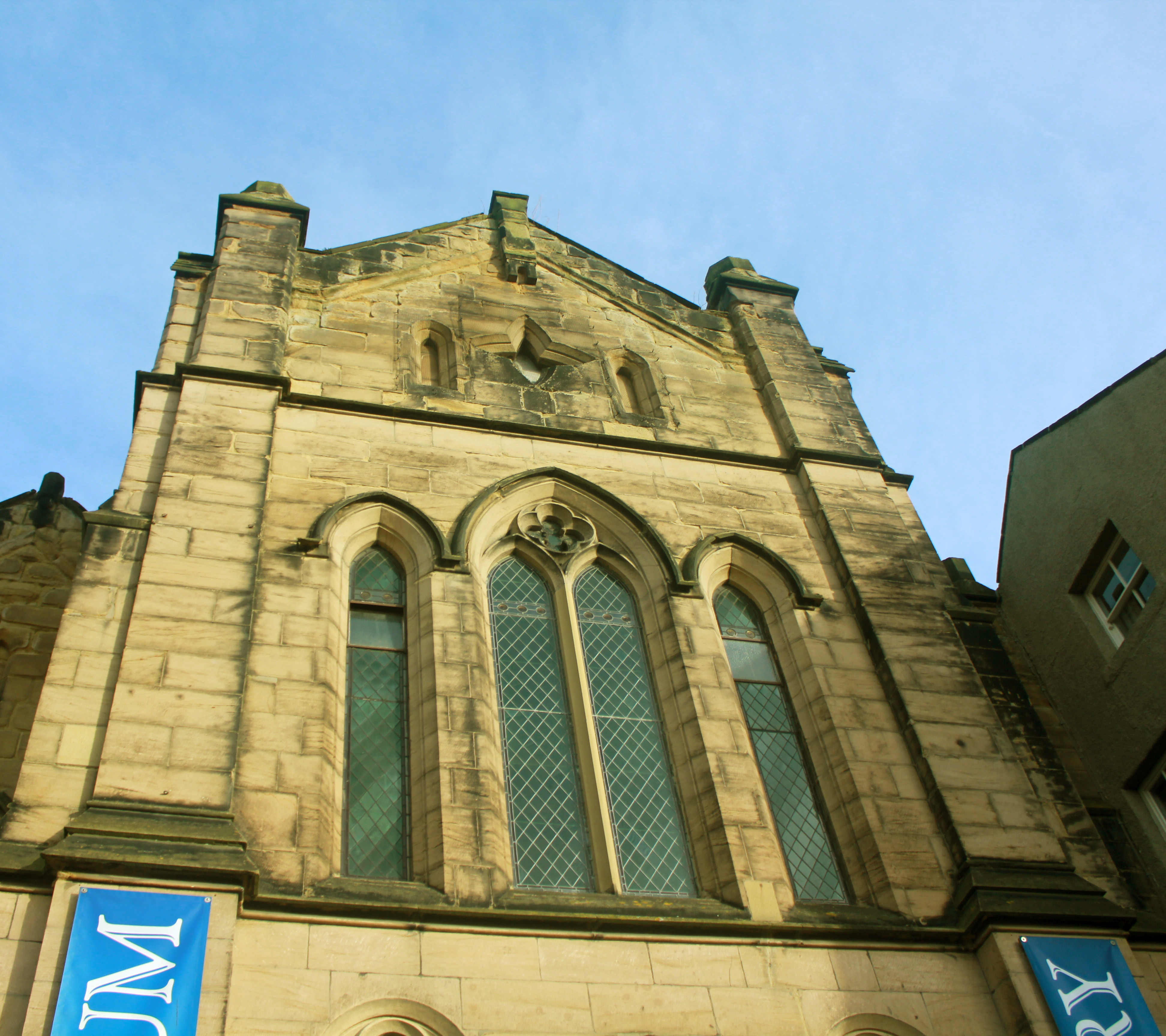FROM PLACE OF WORSHIP TO
BAILIFFGATE MUSEUM AND GALLERY

The most substantial project carried out to date by the voluntary body which runs Bailiffgate Museum and Gallery was undoubtedly its creation. The following details the initial inspiration for this massive undertaking:
A Museum Committee was formed in the early 1990s to explore the setting up of a Local District Museum. St Mary’s Church in Bailiffgate had been lately vacated, and the committee felt that it was an ideal site for a new museum, situated as it was between the Medieval Castle and the church of St Michael’s. The building itself has a very interesting history and background.
There has long been a strong Jesuit presence in the North East of England, and in the Alnwick area in particular. The beginnings of St Mary’s are centred on Sturton Grange, a mile west of Warkworth, which originally belonged to the Cistercian Monastery at Newminsters, Morpeth.
After the dissolution of the monasteries, the building was eventually purchased by a William Ord of Prudhoe, a bailiff of the Earl of Northumberland. A relative of the Ords, Mary Butler, gave Father Sheldon, English Provincial of the Jesuits, certain tithes which were to provide a fund for the support of a priest at Sturton Grange. As a return for her generosity she stipulated that a monthly Mass be said for herself and her relatives. This obligation is fulfilled to this day by the resident priest of St Paul’s Church. The Jesuits decided to use the fund to support a resident priest in Alnwick, and the place chosen was a house in Bailiffgate. This was probably rented at first, but later purchased.
A written source of 1822 states:
“The house is situated about the middle of Bailiffgate on the north side. It belongs to the Society of Jesus who assembled for a short time in a small room, appropriate to their religious services and ceremonies till, theirnumbers increasing, the Rev W Strickland built thepresent chapel in which he placed an altar piece of exquisite workmanship.”
It was on this site that St Mary’s Church was built in 1836 during the pastorate of Father Fishwick, and it was to serve the Catholics of Alnwick until 1982. The Church cost £2,100 and was designed by Mr J Green of Newcastle, and was blessed on September 8 1836 during a Mozart sung Mass by the combined choirs of St Andrew’s Newcastle and St Cuthbert’s North Shields.
In 1855 the Jesuits handed over the church to the Diocese of Hexham and Newcastle and the first secular priest was Fr Joseph Gibson, a member of an old Northumberland family, who ministered there for 35 years. A reminder of the pioneering work of the Jesuit Order here in the past is that five of the brethren are buried in St Michael’s Churchyard.
In 1865 a new organ, costing £170 was installed by Foster and Andrew of Hull, and the event was officially opened by F Hemy of ‘Pianoforte Tutor’ fame. A few years later two stops and an electric blower were added by Howder and Kent of Newcastle. An early decision was taken by the trustees of the Museum to restore the organ, and this work was completed a few years ago.
In November 1896 two fine stained-glass windows were unveiled in the Church, one depicting Blessed Thomas Percy, Seventh Earl, who was beheaded at York in 1572 for his adherence to the old faith. This window was the gift of seven Catholic descendents of the Earl, whose names may be read on a plaque attached to the wall near the window.
The second window of St Hilda, Abbess of Whitby, on the other side, was put in at the same time. The connection between the two windows arose from the fact that the Ancestors of the Percys came to Alnwick from the neighbourhood of Whitby in very early Norman times. Becket’s History of York referring to the Earl’s execution says, that as he mounted the scaffold he declared in a strong voice that “in life and in death I am a Percy”.
In December 1982 the Congregation of St Mary’s moved to the former Anglican Church of St Paul’s and the Sisters of Mercy purchased St Mary’s Church as a study hall for 150 boarders from Our Lady’s Convent High School. The building became redundant when boarding ceased at the school in 1989.
It was in the early nineties that a small Museum Committee was formed to explore the setting up of a Local District museum. Several premises were looked at as a possible venue, and following a visit to St Mary’s they agreed it was an ideal site for the Museum as it was situated between the Medieval Castle and the church of St Michael’s.
In a sense the Bailiffgate Museum is still a place of worship, where the talents and achievements of God’s people are acclaimed and displayed.
by Sister Bridget Loughlin

